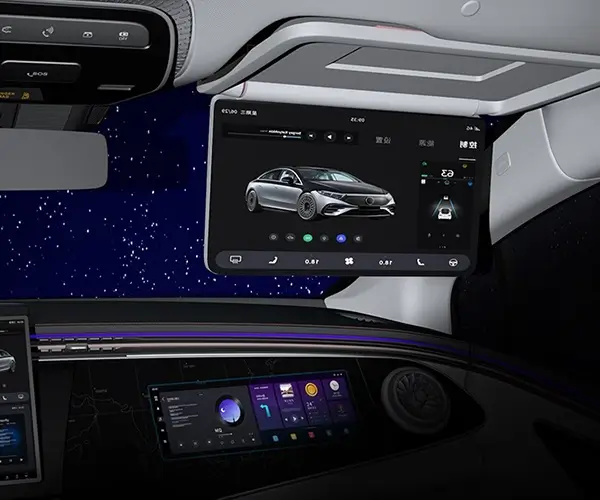In the world of engineering and automation, small components often hold enormous potential. Among these, the 12V gear box motor stands out as a true game-changer—combining power, precision, and versatility into a compact package. Whether you're a seasoned engineer, a robotics enthusiast, or a passionate DIYer, understanding the nuances of this tiny powerhouse can unlock new horizons for your projects.

The Basics of a 12V Gear Box Motor
At its core, a gear box motor converts electrical energy into mechanical motion, but what makes the 12V variant particularly appealing is its balance of power and accessibility. Powered by a 12-volt DC supply, these motors are designed to deliver consistent performance while being easy to integrate into various systems. The "gear box" component refers to a set of gears—usually a reduction gear—that modify the motor's output, providing torque amplification and speed reduction.
This combination allows for precise control over movement, which is critical in applications requiring delicate manipulation or sustained force. The gear ratios can be customized depending on the application's needs—ranging from high-speed, low-torque models to low-speed, high-torque configurations.
The Anatomy of a 12V Gear Box Motor
Breaking down its structure, a typical 12V gear box motor encompasses several key components:
Motor Core: Usually a brushed or brushless DC motor, it provides the initial rotational force. Gear Train: Multiple gears, often made of metal or durable plastic, reduce the motor's high speed to a more usable level while increasing torque. Housing: Protects the internal parts and often includes mounting points for easy installation. Wiring and Connectors: Designed for quick and reliable electrical connections.
The gear train's design determines the motor’s output characteristics—affecting speed, torque, and efficiency. Depending on the application, different gear ratios are employed to fine-tune performance.
Advantages of Using a 12V Gear Box Motor
The appeal of these motors lies in their multiple advantages:
Powerful and Reliable: Despite their small size, they can produce significant torque—ideal for driving small wheels, robotic arms, or conveyor mechanisms. Customizable Gear Ratios: Offers flexibility, allowing you to get the right balance between speed and torque for your project. Ease of Integration: Standardized sizes and connectors streamline assembly into larger systems. Cost-Effective: Affordable options are widely available, making them accessible for hobbyists and industries alike. Energy Efficiency: Optimized for low power consumption while maintaining high performance.
Applications Across Industries
The versatility of the 12V gear box motor makes it suitable for a wide range of applications:
Robotics: Fundamental in designing mobile robots, robotic arms, and automated systems due to their precise control. DIY Projects: Perfect for hobbyists building custom machines, from remote-controlled cars to automated doors. Industrial Automation: Used in conveyor belts, packaging machines, and small manufacturing equipment. Medical Devices: Employed in equipment requiring gentle, controlled movements. Home Automation: Powers adjustable furniture, smart curtains, or automated gardening systems.
Choosing the Right 12V Gear Box Motor
Selecting the appropriate motor involves considering several factors:
Torque Needs: Determine the force required to move your load. Speed Requirements: How fast should the output shaft rotate? Gear Ratio: A higher gear ratio yields more torque but less speed, and vice versa. Size Constraints: Space can be limited; ensure the motor fits your design. Power Supply Compatibility: Confirm your power source meets the 12V requirement. Durability and Material: For harsh environments, choose durable, wear-resistant gears.
Enhancing Performance Through Customization
Many manufacturers offer customizable options—altering gear ratios, shaft lengths, and mounting configurations. You can even select different gear materials, such as steel for rugged applications or plastic for lightweight, less demanding tasks. Some advanced models incorporate sensors and electronic controls, enhancing precision and allowing integration with microcontrollers and automation systems.
The Future of 12V Gear Box Motors
As technology advances, so does the potential of these compact motors. Innovations in brushless motor technology, improved gear materials, and smarter control systems are making 12V gear box motors more efficient and adaptable. They are increasingly integrated with IoT devices, enabling remote monitoring and control, which elevates their role in smart automation.
In conclusion, the 12V gear box motor embodies a perfect blend of power, adaptability, and affordability. Its widespread applications across various sectors underscore its significance in modern engineering and hobbyist projects alike. Whether you're powering a small robot, automating a household task, or designing a complex industrial system, understanding and harnessing the capabilities of these motors can turn your vision into action.
Leveraging innovations in modular drive technology, Kpower integrates high-performance motors, precision reducers, and multi-protocol control systems to provide efficient and customized smart drive system solutions.




































